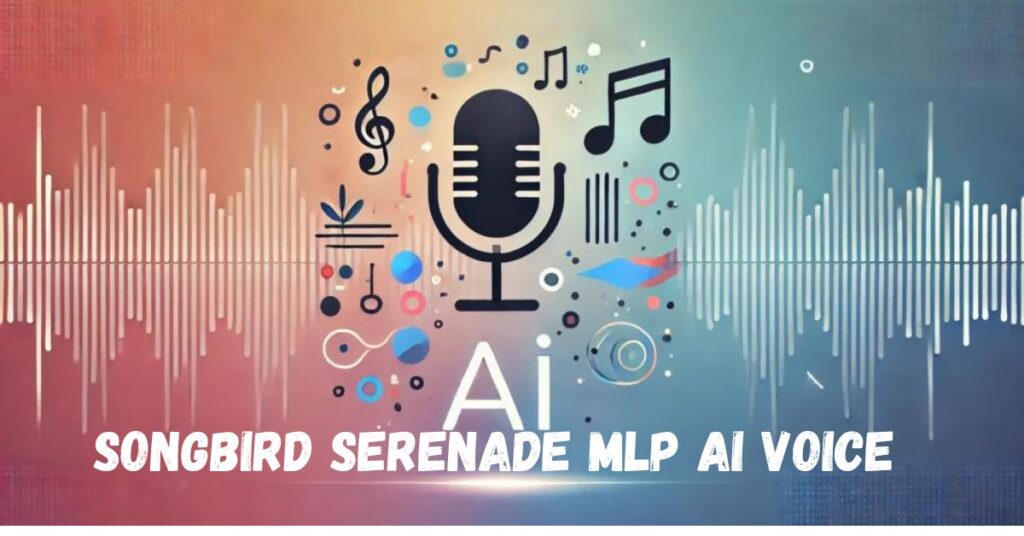
With her unique voice and unforgettable performances, Songbird Serenade MLP AI Voice, a beloved character from the “My Little Pony” (MLP) franchise, has won over fans’ hearts. Fans may now replicate her renowned voice for a variety of creative endeavours, from fan-made animations to original music, thanks to breakthroughs in AI voice synthesis. Though there are now previously unthinkable opportunities to bring this persona to life thanks to AI technology, there are also significant ethical and legal concerns.
Understanding AI Voice Synthesis
Artificial intelligence (AI) voice synthesis is a state-of-the-art technology that produces speech that sounds human. Through the process of training AI models on massive voice recording datasets, a particular character’s subtleties, tone, pitch, and speech patterns can be replicated by the AI. With Songbird Serenade MLP AI Voice, artificial intelligence (AI) voice synthesis enables fans to produce fresh dialogue, performances, and even songs that perfectly mimic the character’s voice from the television series or film.
With the advancement of AI voice synthesis technology, important speech characteristics like pitch, speed, and emotion can now be precisely controlled. This degree of control guarantees that the recreated voice keeps the characteristics that listeners adore.
Weights.gg: A Platform for AI Voice Models
Weights.gg is an essential platform for AI voice synthesis in fan communities, enabling creators to exchange and access AI voice models. The process of producing AI-generated voices for characters like Songbird Serenade MLP AI Voice is made easier by these pre-trained models. Weights.gg has made it easier for fans and creators to use AI voice models in their work by providing a central platform for these models.
The first step in the procedure is gathering voice samples of Songbird Serenade MLP AI Voice from her “My Little Pony” appearances. An AI model is trained using these samples to identify and imitate the essential elements of her voice, such as its unique rhythm and tone. After training the model, users can produce fresh speech or music that sounds like.
Creative Uses of Songbird Serenade MLP AI Voice
AI voice synthesis offers a wealth of creative opportunities for both fans and creators. Some of the most popular uses of Songbird Serenade MLP AI Voice include:
- Fan-Made Animations: Creators can develop new animations or storylines featuring Songbird Serenade MLP AI Voice, complete with authentic-sounding dialogue.
- Audiobooks: AI voice models can be used to narrate MLP fanfiction or original stories, giving listeners an immersive experience with voices that resemble their favorite characters.
- Custom Songs: Fans can create original songs or covers that sound like they’re performed by Songbird Serenade MLP AI Voice, adding a unique touch to their musical projects.
AI-generated voices can also greatly increase accessibility for fans who are blind or visually challenged, giving them access to audio versions of “My Little Pony” content that they might not otherwise be able to enjoy. This technology makes it possible for more individuals to experience their favourite characters while also expanding the audience for fan-created material.
Legal and Ethical Considerations
The fan community is excited with AI speech synthesis, but there are also moral and legal questions raised by it. Copyright protects characters like Songbird Serenade, therefore it could be illegal to use AI to mimic their voices without the required consent. This is especially important when voices produced by AI are utilised in commercial endeavours or on public media platforms without the creators’ or rights holders’ permission.
Challenges of AI Voice Synthesis
Despite the impressive capabilities of AI voice synthesis, the technology still faces some challenges:
- Capturing Subtle Nuances: While AI models can accurately replicate pitch and tone, they sometimes struggle to capture the subtle nuances of human speech, such as emotional inflection or natural pauses.
- Quality Variation: The quality of the generated voice can vary depending on the input text and how well the AI model has been trained. In some cases, the AI may produce speech that sounds mechanical or lacks the fluidity of human dialogue.
However, the MLP fan base has welcomed AI voice synthesis with open arms. A growing collection of AI models is being improved by fans, who keep adding to it in order to improve the voices of their favourite characters—including Songbird Serenade. A multitude of fan-created content that imaginatively and imaginatively brings these characters to life has resulted from this joint effort.
Conclusion
The development of AI voice synthesis has completely changed the way that authors and fans communicate with cherished characters, such as Songbird Serenade from “My Little Pony.” The community may produce new material that sounds true to the original program while extending the boundaries of creative expression by utilising AI technology. To ensure that AI-generated voices are used in a way that respects the original authors and intellectual property, it is crucial to carefully negotiate the legal and ethical hurdles.
FAQs(Songbird Serenade MLP AI Voice )
What is AI voice synthesis?
AI voice synthesis is a technology that uses artificial intelligence to generate human-like speech by training models on voice recordings.
How is Songbird Serenade’s voice recreated using AI?
Audio samples of Songbird Serenade’s voice are collected from the show or movie, and AI models are trained to replicate the key characteristics of her voice, such as pitch, tone, and speech patterns.
What is Weights.gg?
Weights.gg is a platform where users can share and access pre-trained AI voice models, making it easier for creators to use AI-generated voices in their projects.
Are there any legal concerns with using AI-generated voices?
Yes, using AI to recreate the voice of copyrighted characters like Songbird Serenade without permission could infringe on intellectual property rights.
What are the challenges of AI voice synthesis?
Challenges include capturing subtle nuances of human speech and varying the quality of the generated voice depending on the input text and training quality.

